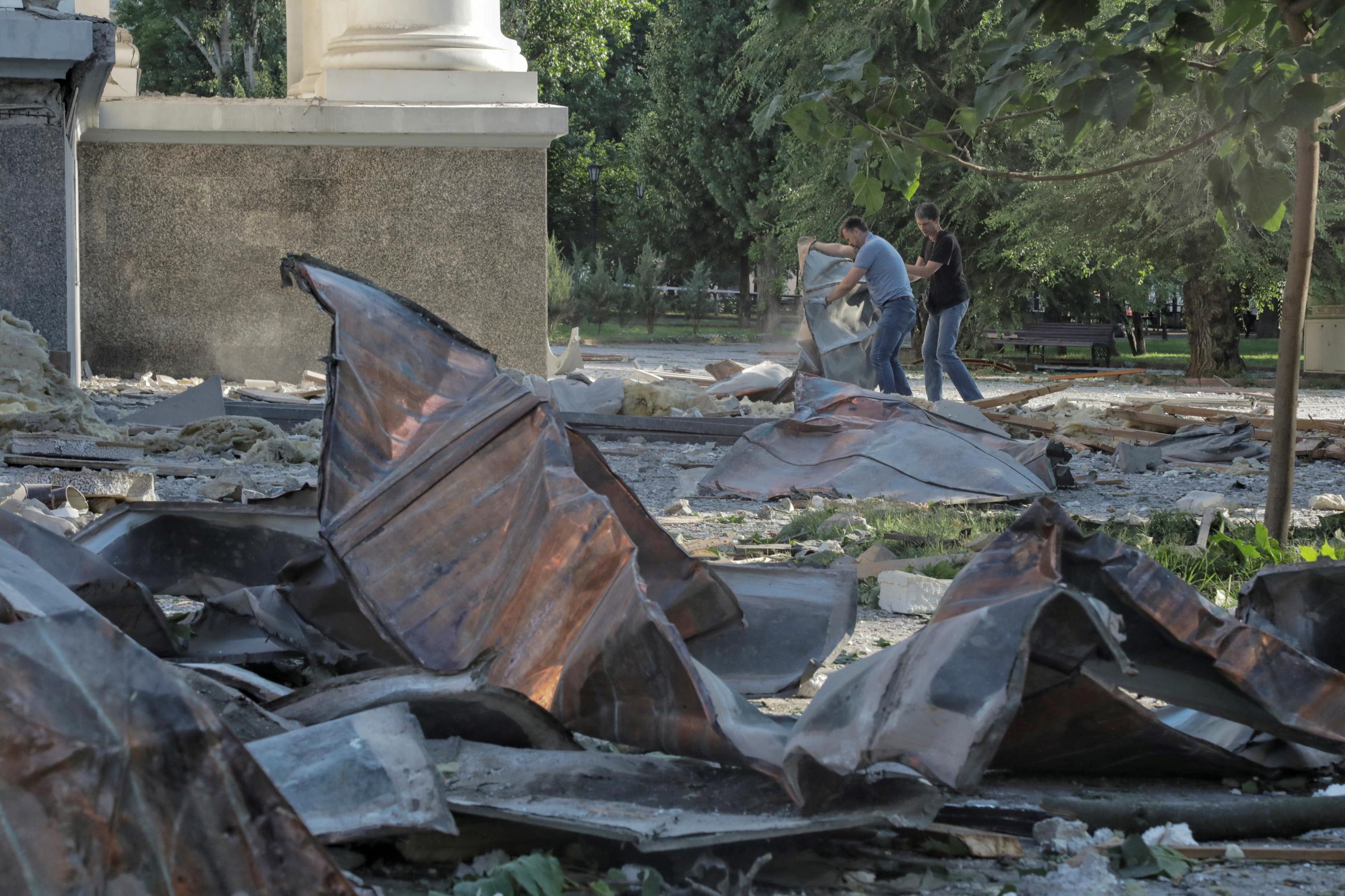"The pursuit of peace and progress cannot end in a few years in either victory or defeat. The pursuit of peace and progress, with its trials and its errors, its successes and its setbacks, can never be relaxed and never abandoned."
– Dag Hammarskjöld, former Secretary-General of the UN
On September 21, 2023, states and their leaders will commemorate the forty-second International Day of Peace. Designated officially by the UN General Assembly in 1981, this day stands as a reminder of the invaluable importance and benefits of peace around the world. Leaders are urged to commit to twenty-four hours of ceasefire, nonaggression, and nonviolent activities. Communities around the world often engage in a candle lighting vigil or moments of silence to honor those who have fallen victim to armed conflict, war, or violence. Symbolically, the Japanese Peace Bell tolls outside UN headquarters on this day each year in the hope of bestowing peace—though momentarily—to innocent men, women, and children in war-torn areas. But what can be done to ensure perpetual peace? To what extent can the global health community and institutions aid in breaking the vicious cycle of warfare and its tragic consequences for health?
At its core, peace is a fundamental determinant of public health. In 2019, the World Health Organization (WHO) listed fragile and vulnerable settings, including those afflicted by conflict and violence, among the top ten threats to global health. Historically, the prospects of peace were used to guide nations and entire civilizations as a north star to tranquility, harmony, and regeneration. Even though peace continues to be a stated goal of many governments, wars and conflicts still ravage the world, devastating countries' health-care systems and the well-being of their people.
Peace is a fundamental determinant of public health
Even though global health-care systems are still emerging from the COVID-19 pandemic, around eight hundred million people currently live in countries affected by conflict, violence, and health-care systems on the brink of failure. This is the equivalent to the population of all G7 countries combined. The number is shocking, especially considering the extent of the direct and indirect humanitarian, socioeconomic, environmental, and health impacts of war. Since 1990, according to the Global Burden of Disease study, the world has seen 3.3 million conflict- and terrorism-related deaths. Civilian deaths often account for more than 80 percent of total war-inflicted deaths, as in Bosnia-Herzegovina, Rwanda, Democratic Republic of the Congo, Sri Lanka, Algeria, Yemen, and most recently the Tigray region in Ethiopia. By 2030, it is estimated that around 46 percent of the world's lowest-income populations will live in locations characterized as vulnerable or conflict affected.
Even after a war ends and peace treaties are signed, the effects of conflict tend to linger for generations to come. Unlike the direct harms of war on populations, typically measured through cumulative deaths or executions, the indirect impacts are difficult to measure. Those include the total number of wounded and displaced individuals, gender-based violence and rape, shortages in food and clean water, and mental health issues. Oftentimes, these "weapons of war" and "tools of control and terror" are underestimated, due to either collective denial by the aggressors and governments, or in some instances the burden of shame and stigma that the survivors of sexual violence may carry.

Sexual and Gender-Based Violence in Warfare
Sexual violence during warfare is one of the most gruesome and devastating instruments of terrorizing and destroying nations, communities, and entire families. In many cases, this type of violence is perpetrated against women and girls. Large-scale violence, especially in times of conflict and warfare, is a threat to gender equality and international peace and security. As a tactic of war, "sexual violence reinforces gender inequalities and normalizes sexual violence," in the words of the UN Security Council. However, not until the late 1990s (in part because of the use of systematic rape of women as a form of ethnic cleansing in the conflicts in Bosnia-Herzegovina and Rwanda) did the International Criminal Tribunals start to prosecute systemic sexual violence as a form of war crime and genocide. Without immediate medical assistance and communities of support, wartime sexual violence can have long-term effects on the victims. Survivors of sexual violence may experience pervasive physical consequences, such as injuries, pain, sexually transmitted infections, unwanted pregnancy, and persistent bleeding, as well as acute impacts on mental health. Data from UN Women shows that for each rape reported in connection with a conflict, at least ten to twenty more cases go undocumented. Additionally, the field practitioners with the International Committee of the Red Cross have found that about 23 percent of those receiving psychosocial support and mental health services listed rape and sexual violence as a contributing factor to anxiety and depression. In times of conflict and war, it is of utmost importance that survivors of sexual violence are protected from further violations through risk-awareness and risk-reduction programs offered by public health professionals. Expanding educational programs on the effects of sexual violence for entire communities plays an integral role in helping victims reintegrate without fear of rejection, stigma, and excommunication. Since the start of the Russian invasion on Ukraine, countless reports of rape and sexual violence there have emerged, requiring immediate international attention.
Food and Clean Water Shortages
In conflict zones, access to food and water is sometimes deliberately restricted. Contaminated land and destroyed production lines often lead to an increased risk of famine, malnutrition, and disease outbreaks. In Yemen, for example, warfare has further exacerbated the shortages in clean water supplies and food. Over time, conflicts in Yemen have led to more than 50 percent of the population facing starvation and food insecurity, and one-third lack access to safe drinking water. This context can greatly reduce physical and mental health well-being, especially among children, older adults, and those with chronic diseases. A few years ago, the UN Security Council passed a resolution condemning the use of food insecurity and starvation as a weapon of war. Since the turn of the millennium, conflicts have negatively affected countries' food and supply systems, further contributing to the unaffordability of healthy diets.
Displacement and Migration
Conflicts lead to migration and displacement. For those fleeing war, migration is often seen as the sole form of salvation. In 2022, the number of people who experienced forced displacement due to persecution, conflict, violence, human rights transgressions, and events severely disrupting public order surged by 21 percent, reaching an estimated 108.4 million by year-end. Although the primary aspiration of many forcibly displaced people is to return to their homes, this goal remains elusive in most displacement scenarios worldwide. In 2022, for every one individual who managed to return home, twenty-two remained refugees.
The number of people who experienced forced displacement surged by 21 percent in 2022
Migration and displacement present major burdens on an individuals' health and well-being as well as their access to food and security. Often, migrants may present worse health outcomes in the countries that they pass through or in which they settle. Their health is harmed by barriers to health-care access and social fragility and exclusion, such as language and cultural differences, poor living conditions, and institutional discrimination. This spectrum of conditions can increase the health risk both for communicable diseases, where crowded housing conditions and limited access to hygiene services and safe water together with poor vaccination status can lead to epidemic outbreaks, and to chronic diseases (NCDs) and mental disorders. Displaced populations often face heightened risks for NCDs due to disrupted health-care and medicine access, inadequate nutrition, and increased stress levels. Moreover, migrants frequently encounter xenophobia, discrimination, and social exclusion, and are thus at greater risk of threats such as physical and sexual violence. These fragilities are even more pronounced in people who are undocumented migrants, who are invisible to national health and social welfare systems.
Role of Governments and Public Health Professionals in Peacebuilding
Despite local and international efforts to reduce the morbidity and mortality of populations through innovation, improved health legislation, and expanded coverage or access to care, the global health community — now more than ever — needs to treat peace as essential. As stated at the Thirty-Fourth World Health Assembly in 1981, "the role of physicians and other health workers in the preservation and promotion of peace [is] the most significant factor for attainment of health for all." Everyone has a part to play in creating safer and healthier environments for our communities and for generations to come. Governments should invest in preserving peace for their populations and in building systems of care that put citizens' welfare at the forefront of national health policy agendas. Interestingly, research shows both that countries with stronger support systems for public health services are less likely to experience civil conflicts, and that in countries with stronger systems of welfare and health-care access residents are less likely to engage in violence and warfare.
Everyone has a part to play in creating safer and healthier environments for our communities and for generations to come.
It is challenging to create any sort of lasting peace without meeting people's basic survival needs. In the aftermath of conflict, debris and damage such as depleted uranium shells remain, health infrastructure is severely compromised, and the situation can easily spiral back into a cycle of violence. Restoring a country's public health system is one of the most important things the international community can do. Intervention is always complicated but — if done in conjunction with reputable global health actors such as the WHO —can have a major impact on ensuring a lasting peace. Rebuilding a country after conflict is always difficult. However, given a responsive and functioning public health infrastructure, some of the most pressing needs can be met.
Only seven years remain to meet the Sustainable Development Goals. Preventing further conflicts and wars is thus of utmost importance. Now more than ever is the need essential for accountability – including that of global health actors – to promote peace. The global health sector should advocate for violence mitigation and prevention and foster inclusive civil dialogue. Peace is and should be treated as a global health priority.

EDITOR'S NOTE: The authors are employed by the Istituto Superiore di Sanita (ISS) / National Institute of Health, Italy, and University of Washington's Institute for Health Metrics and Evaluation (IHME), USA. IHME collaborates with the Council on Foreign Relations on Think Global Health. All statements and views expressed in this article are solely those of the individual authors and are not necessarily shared by their institutions.












